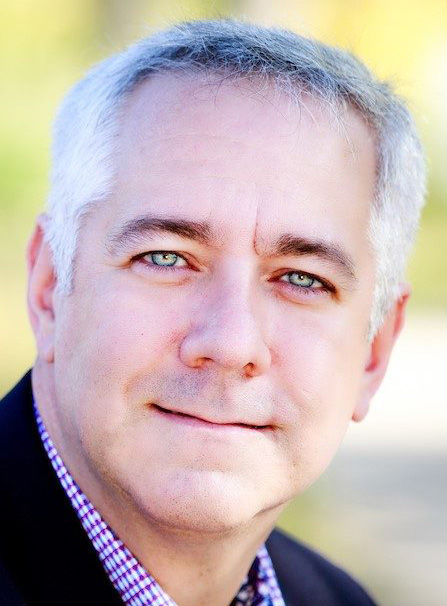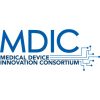Computational modeling and simulation (CM&S) delivers significant advantages to traditional build and test prototype design and regulatory pathways using animal and clinical studies alone. The approach can be used throughout the product lifecycle to help useful medical devices gain approval faster while reducing the cost burden. In an interview with MedTech Intelligence, Arlen Ward, Ph.D., principal at System Insight Engineering explains the advantages of CM&S and how all device companies can benefit.
MedTech Intelligence: From what you’ve seen in the industry, what is the adoption rate of computer modeling & simulation in the MedTech industry?
Arlen Ward, Ph.D.: I think the interest is there, because there is a lot of potential. Using model and simulation allows you to investigate a wider range of possibilities for your device and look at different patient populations that you may not be able to get through clinical studies. It really allows you to make a lot of those design decisions early on. I think many companies see those advantages and accept that, but there’s a hesitance to adopt it within an organization, and that primarily comes from the regulatory side. There’s a lot of concern that they would get to the end of the process and submit everything through a 510(k) or PMA, etc., but then the FDA wouldn’t accept those results and they would have to start over again using the traditional methods of testing in labs. There was some hesitation early on, on the adoption side. There’s been a lot of work on both the FDA’s as well as the industry’s to address some of those concerns in terms of FDA putting out guidance documents on how to submit simulation results as part of your regulatory submission. There are also standards—the ASME V&V 40 standard is one that came out in 2018, and it really helps to define what sorts of validation has to be done to provide the credibility for those simulations to be accepted by regulatory bodies. So there’s been a lot of progress in those areas, but the adoption rate slowed due to the perceived risk of doing something they have not done before.
That said, the current state of COVID-19 has changed that a lot as well. With clinical trials being canceled and companies not having access to their labs because of employees working from home, they really have turned to simulation as a great option in order to keep making progress on medical device development, even when the more traditional development approaches have been stalled out because of the pandemic.
Arlen Ward, Ph.D. will be speaking during the MedTech Intelligence virtual event, “Computer Modeling & Simulation in MedTech Product Submissions” | January 27–28, 2021MTI: What are the misconceptions about CM&S, especially among smaller companies, and how can these small/start-up firms take advantage of its benefits?
Ward: On the misconception side: A big one is the idea that the interaction between these devices and the patient—that tissue interaction—is just too complicated to model. That was probably the case 20 years ago, but there’s been a lot of progress made in multi-simulation modeling where we do a lot of things at the same time in terms of the heat transfer, electromagnetics, or the laser interaction (the optical side)—all of those things can be done simultaneously in simulation, whereas many years ago, you had to simplify it to a point where it only had limited utility.
For smaller companies, I think a lot of those misconceptions are that you need an expert in-house to do that kind of work in terms of having someone who understands the modeling and simulation in order to be able to implement it. Also, traditionally, it has was been the large companies that can afford the overhead of large computer systems, etc. wherein order to solve the bigger problems, and that was out of the reach of smaller companies. These days, there are consultants that can come in and help the smaller companies.
In addition, there is the availability of cloud computing resources like those from Amazon, Google or IBM. Those are all options for being able to leverage a large amount of computing power without having to build it up yourself, and only paying for the time you use it. That brings all the advantages of computational modeling and simulation into the realm of feasibility for the smaller companies. So they can start to leverage some of those advantages that you get through computer modeling and simulation—better performing devices, optimization, and safer, and speed up their development timeline—you can do all of those things while still being that small company without having those resources in house. Cloud computing helps to bring all of it within reach of smaller medical device companies.

MTI: What are some of the exciting technologies that are taking advantage of CM&S?
Ward: The biggest technologies that come to mind are topology optimization and generative design—where you give the simulation the bounds of a design and then you allow it to add and subtract the material to meet your design criteria. You might want something that is very rigid but has very low mass, and so it would remove materials from the spaces where it doesn’t support that rigidity and work through thousands, if not millions, of cycles in order to come to an optimized shape that no human would never come up with—a very lattice-like structure to a lot of structural things. You can use that same concept around optimization of energy delivery, heat transfer, etc.
On a broader scale, another thing computer modeling and simulation brings to the industry is that right now, with advances in sensors, processors and software and materials, there are so many different variables that can be changed for a particular design in order to change the overall effectiveness of a device. Computational modeling and simulation is being used to narrow that list down to something that is feasible and workable for a design team rather than have hundreds of options in uncertainty about how any one design change affects the end result. By using sensitivity analysis with computer modeling and simulation, you can narrow that list down to the big drivers with the effects that you are interested in. if you need to have a microwave ablation device that ablates tumors to a certain size, you can really narrow it down to those input parameters that will affect the size of that ablation in the end.
MTI: Are there different required qualifications for using CM&S versus the training required for a classical medical device engineer?
Ward: I think there’s a heavy reliance on the math side because each of the approaches to solving the simulation problems. There are pros and cons to the mathematical implementation. It has to be [used by] someone who is well versed or at least familiar with it. The biggest change from just being a medical device engineer working on a project versus one that leverages a lot of simulation is that, on the simulation side, you need to have a more system-wide view of everything that is going on versus the individual components or parts of the project.
For example, a lot of the work that we do is in the interaction between energy and tissues. If you have a laser system that runs down a fiber to a disposable that can be used by the surgeon, and you’re the engineer who works on the disposable side, it’s not uncommon for the traditional engineering side to be very focused on the disposable. If you’re doing the modeling and simulation work, you have to understand: How the energy is delivered, what is the beam shape of the laser, what is the wavelength, what is it doing once it leaves the device, is it interacting with the tissue, are the light beams being scattered and absorbed in a certain way, etc. As the tissue is heating, it is also going to be changing those properties. It’s a very dynamic system that goes on between them, so if you’re going to model it, you need to have the wider scope of understanding the whole system, from the energy delivery side all the way through the impact that has on the patient. Most of the design criteria are really what is happening at the patient level, because what happens during the surgery has some sort of effect on the patients themselves. You have to look at the whole system rather than the part that you have been responsible for designing, which is a bit wider of a perspective than traditionally you see in that siloed [design] approach.
MTI: What is the biggest change you have seen in CM&S over the past 20 years and what does the future hold for it in the medtech industry?
Ward: The biggest change I’ve seen over last 20 years is with the increase in computing power and increase in sophistication of the modeling tools, having the ability to model things more like they are in reality has made CM&S much more useful in the design process. Twenty years ago, you had to make significant simplification in your modeling in order to get it to run on the computer hardware that was available at the time. You had to separate things out so that you would solve the electrical part of the solution before the thermal part, and it would take time to do all these things. That development time, those simplifications, and the processing time—they really made it less useful than it is today. Bringing all of those things together—being able to develop it faster, and get to the useful information faster, has been the biggest advantage along the way. Somewhere in there we hit a tipping point of it being useful enough in the design process that it made sense to start using simulation more. These days it is getting more and more embedded into the design process for those innovative firms. Every time the computing power increases or [there is] new software that is more effective or more efficient and easier to use, those advantages multiply from there. I would say that is the biggest shift I’ve seen in the last 20 years that has impacted the utility of using computer modeling and simulation.
Going forward, from here what I see as a big help in the future is that there are a lot of places in medical technology and devices where people are starting to leverage machine learning and artificial intelligence. The thing about machine learning is that you have to have data sets that you can use for training them in order to make them an effective algorithm. A lot of times that data just isn’t available from a clinical setting. If you have specific devices used in a patient population, a lot of times that data has not been collected and captured over the year, or it is in different formats, or maybe it is a rare enough application that it just doesn’t generate enough data over the course of the year. To go out and get [the data] would be prohibitively expensive—it would take years and millions of dollars to intentionally collect that data to train the machine learning side of things. I think computer modeling and simulation can be brought in to augment whatever clinical data is available and really help retrain those algorithms so that we can use machine learning and AI in places where it may not have been otherwise feasible, and then use the clinical data to close the last bit of gap. If you train it to 85% accuracy with the simulation data, maybe close that gap and get it to a higher performing algorithm. I think that’s going to be a big part of the future of modeling and simulation—its role in training machine learning and artificial intelligence.






